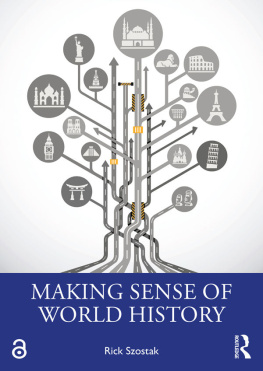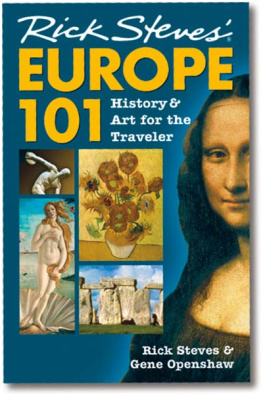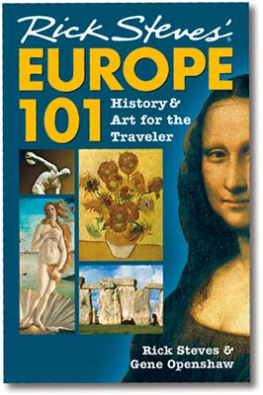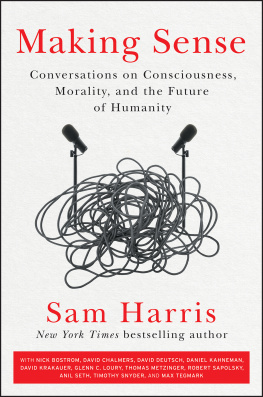
Making Sense of the Future
Making Sense of the Future integrates the latest thinking in Future Studies with the authors expertise in world history, economics, interdisciplinary studies, knowledge organization, and political activism.
The book takes a systems approach that recognizes the complexity of our world. It begins by suggesting a set of goals for human societies and identifying innovative strategies for achieving these goals that could gain broad support. Each chapter begins with a How to section that discusses how we can identify goals, strategies, trends, surprises, or implementation strategies and concludes with an integrative analysis that draws connections across the preceding discussions. Taking a cross-disciplinary approach, Szostak explores key trends and how these interact so that we can develop strategies to guide trends towards desirable futures. He discusses the ways in which we can best prepare for surprises such as epidemics and natural disasters, enabling us to react to them in beneficial ways.
Supported by a list of guiding questions and suggestions for class projects, this is an accessible textbook for students of Future Studies and Future Studies courses.
Rick Szostak is Professor and Chair of Economics at the University of Alberta, Canada. He is the author of 19 books and 50 articles across economic history, world history, interdisciplinary studies, knowledge organization, and a dozen other fields. This book is a sequel to his Making Sense of World History (2021).
Making Sense of the Future
Rick Szostak

First published 2022
by Routledge
2 Park Square, Milton Park, Abingdon, Oxon OX14 4RN
and by Routledge
605 Third Avenue, New York, NY 10158
Routledge is an imprint of the Taylor & Francis Group, an informa business
2022 Rick Szostak
The right of Rick Szostak to be identified as author of this work has been asserted by him in accordance with sections 77 and 78 of the Copyright, Designs and Patents Act 1988.
The Open Access version of this book, available at www.taylorfrancis.com, has been made available under a Creative Commons Attribution-Non Commercial-No Derivatives 4.0 license.
Trademark notice: Product or corporate names may be trademarks or registered trademarks, and are used only for identification and explanation without intent to infringe.
British Library Cataloguing-in-Publication Data
A catalogue record for this book is available from the British Library
Library of Congress Cataloging-in-Publication Data
A catalog record has been requested for this book
ISBN: 978-1-032-03350-1 (hbk)
ISBN: 978-1-032-03348-8 (pbk)
ISBN: 978-1-003-18685-4 (ebk)
DOI: 10.4324/9781003186854
Typeset in Bembo
by Newgen Publishing UK
The best way to predict the future is to create it
Commonly attributed to Peter Drucker
Contents
An alumnus of my department, Brian Menges, suggested to me one day over lunch that my university should offer a course in Future Studies. I mentioned the idea to my dean, who liked it and urged me to pursue it. So I did a bit of reading. I had read many works in Future Studies over the years and had occasionally interacted with futurists. But this time I discovered Hines and Bishops Teaching about the Future, and had an email conversation with Andy Hines. As noted elsewhere, I soon recognized that I could write a book about the future which would integrate the latest thinking in Future Studies with my own understandings of ethics, interdisciplinarity, economics, world history, and political activism. I take this opportunity to thank Brian Menges, Dean Lesley Cormack, and Andy Hines for setting me on the path to write this book.
Routledge sent the manuscript to referees and I was blessed with the best referee reports I have ever received. I thank both Michael McCallum and Tami Carmichael for very useful advice. The book is much stronger because of their suggestions.
As I was writing the book, I attended a virtual conference presentation by Jessica Hirshorn. The exercises in boxes 4.6, 5.3, and 6.3 owe much to that presentation. I also stole the books epigram from her PowerPoint.
This book more than any other I have written should acknowledge the legions of authors in Future Studies itself, and in many other fields that I draw upon. This book is only possible because of their work. I hope that I have not too horribly butchered their insights while integrating them.
I thank Aarne Mmmel for years ago acquainting me with the Meadows and Wright book that is discussed in .
Several people read the manuscript and provided useful comments. I thank Mark Ciotola, Gary Cross, Jessica Hirshorn, Roderick Lawrence, and Aarne Mmmel for their advice.
It has been a pleasure working again with Eve Setch and Zoe Thomson at Routledge. It has also been a pleasure to again have Sue Browning as copy-editor and Amanda Speake as indexer. I thank them all. It is great that we can publish this book Open Access as a sequel to Making Sense of World History. I thank Associate Dean Marie Carriere and Associate Vice President Research Laura Beard at the University of Alberta for providing financial support toward Open Access publication. My children Mireille, Julien, and Theo serve as a constant reminder that the future is very much worth fighting for.
DOI: 10.4324/9781003186854-1
The purpose of Future Studies is to allow humans to understand plausible futures, and then seek to shape these into desirable futures. These may seem to be both invaluable and unachievable goals. Indeed, if we thought that we were good at looking into the future, we would spend more time doing it. Almost every university in the world has a department of History to help us peer into the past but very few have a similar enterprise for surveying the future. This book will show that we are better able to address our future than we might think I think. We should thus put far more effort into doing so.
Fortunately, the field of Future Studies has matured to a point where there is consensus around several key points and articulation of numerous methods for peering into the future. However, there is no consensus around the best methods for examining the future, and even less consensus around what we should be doing to shape that future. This book will outline a coherent structure for doing both.
This book builds upon the latest thinking in Future Studies. It also builds upon my Making Sense of World History (2021), a book that set out to both understand and draw lessons from the whole sweep of human history. Future Studies is a self-consciously interdisciplinary field, recognizing that the future will be determined by how political, economic, social, environmental, technological, and other phenomena interact. This book builds also on my career as a scholar of interdisciplinarity and especially my co-authorship of multiple editions of two textbooks about how to perform interdisciplinary research. In particular, it applies a systems analysis approach based on the observation that the key phenomena studied in different disciplines all interact, at least indirectly. (You can anticipate seeing some flowcharts in what follows.)














